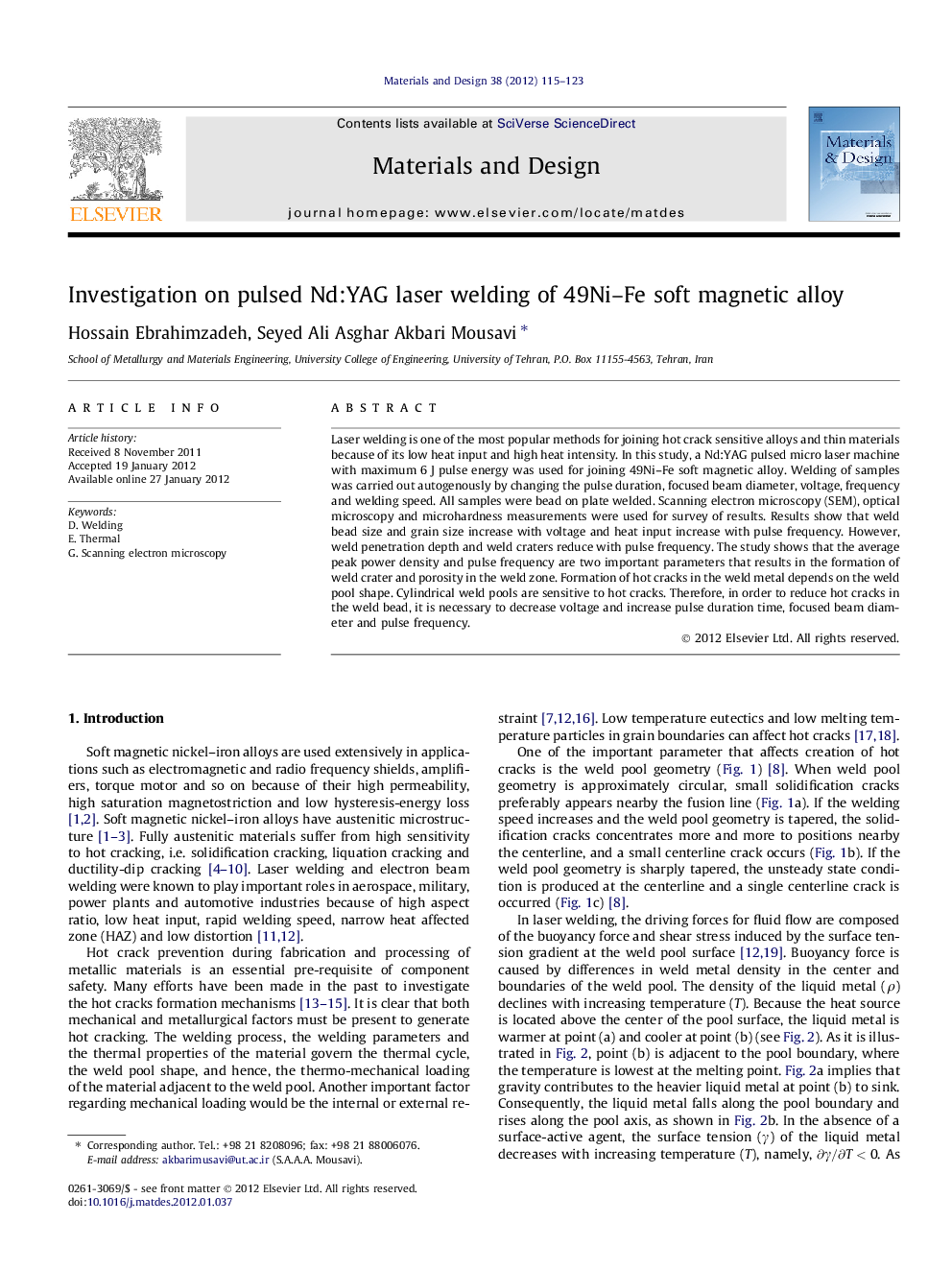| کد مقاله | کد نشریه | سال انتشار | مقاله انگلیسی | نسخه تمام متن |
|---|---|---|---|---|
| 830721 | 1470359 | 2012 | 9 صفحه PDF | دانلود رایگان |

Laser welding is one of the most popular methods for joining hot crack sensitive alloys and thin materials because of its low heat input and high heat intensity. In this study, a Nd:YAG pulsed micro laser machine with maximum 6 J pulse energy was used for joining 49Ni–Fe soft magnetic alloy. Welding of samples was carried out autogenously by changing the pulse duration, focused beam diameter, voltage, frequency and welding speed. All samples were bead on plate welded. Scanning electron microscopy (SEM), optical microscopy and microhardness measurements were used for survey of results. Results show that weld bead size and grain size increase with voltage and heat input increase with pulse frequency. However, weld penetration depth and weld craters reduce with pulse frequency. The study shows that the average peak power density and pulse frequency are two important parameters that results in the formation of weld crater and porosity in the weld zone. Formation of hot cracks in the weld metal depends on the weld pool shape. Cylindrical weld pools are sensitive to hot cracks. Therefore, in order to reduce hot cracks in the weld bead, it is necessary to decrease voltage and increase pulse duration time, focused beam diameter and pulse frequency.
► In high temperature gradients, grains are oblong and coarse.
► Pulse overlap, duration time and focused beam diameter reduces penetration depth.
► Pulsed frequency increases heat input and decreases the penetration depth.
► Hot cracks produced due to weld pool shape and heat input induced during welding.
► Peak power density and pulse frequency determines weld crater and porosity.
Journal: Materials & Design - Volume 38, June 2012, Pages 115–123